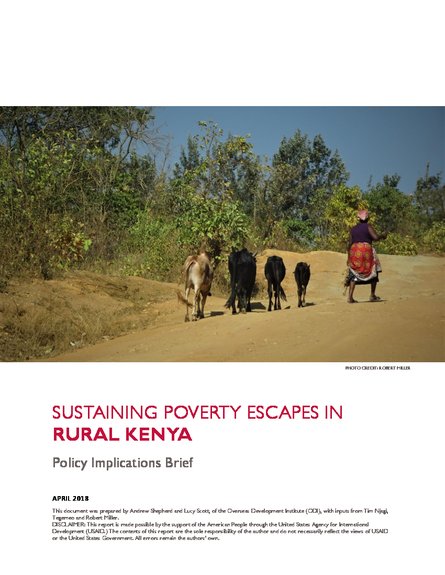
The absence of poverty data and analysis for Kenya until March 2018 means that interventions for poverty reduction frequently focus on general sectors without a nuanced understanding of drivers of poverty. There is now the National Bureau of Statistics’ 2015/06 survey data available revealing that a one percentage point per year reduction in the incidence of poverty since 2005/06, though the numbers of poor people have largely remained constant.
This brief stems from quantitative and qualitative research on poverty dynamics in Kenya reported in a companion paper (Scott et al, 2018) which focuses on the drivers of sustained poverty escapes, or the factors that enable escapes from poverty to last over a period of time. Key findings from the report include those about the resource base households have, their attributes, capacities, economic activities and strategies, and the shocks they experience.
The focus of this brief is on what those findings may mean for interventions and approaches in Kenya that aim to enable poor households to escape poverty and remain out of it. It outlines the policy and programming context in Kenya and pulls out particular thematic areas that emerged from the research, discussing the implications for each theme. These themes are:
- access to land and engagement in agriculture;
- supporting migration and the rural non-farm economy;
- skills and not just grades: improving the transition between education and the labour market; and
- improving the effectiveness of social protection in addressing leading shocks.